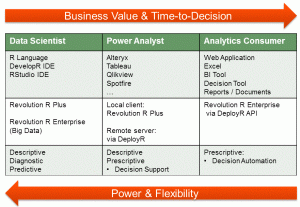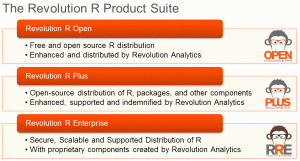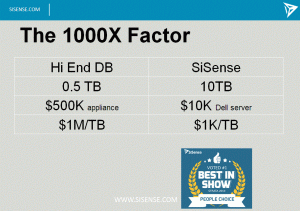The BBBT started off 2015 with yet another company with a great technology and far too simplistic strategy and message. It’s the old problem: Lots of folks come to the BBBT because their small companies are starting to get traction and they want wider exposure, but the management doesn’t really understand Moore’s Chasm so are still pitching to their early adopters rather than the larger market.
Friday’s presenter was Kevin Courtney, VP Business Solutions, Teleran. Back in the day, I evaluated a small technology company for acquisition of their technology and inclusion into Mercury Interactive’s testing suite. It was an SQL inspector that let our products see the transactions going between clients and servers to help improve performance testing.
Teleran has the same basics but has come much further in recent years. The company starts with the same technology but has layered great analytics on top in order to help companies understand database usage in order to optimize application and network performance. They’ve broken down the issues into three key areas of business concern:
- Performance and value: How are queries being performed in order to minimize dead data transfer and increase the value of existing computing infrastructure.
- Risk and Compliance: Understanding who is doing what with data in order to minimize risk and prove regulatory and contract compliance.
- Modernization, migration.re-platforming: Understanding existing loads, transactions and queries in order to better prepare for upgrading to new technologies – both hardware and software.
In support of these capabilities, Kevin mentioned that they have 8 software patents. While my understanding of patent, trademark and copyright laws leads me to understand that software patents shouldn’t be legal, they are and the patents do show innovation in the field. Hopefully.
Mr. Courtney also did a good job giving stories that supported each of these areas. I’ll quickly describe my two favorite (I know, three bullets, but that’s life).
One example showed that value is more than just a dollar value. He described a financial trading house using Teleran to analyze the different technology and data usage patterns between their top and bottom performing agents, then used that analysis to provide training to the bottom tranche (yes, I did have to use that word while discussing finance) in order to improve their performance.
The second example combined performance and modernization. He described a company where there were seven unsanctioned data marts pulling full data sets from operational systems. That had a severely negative impact on performance throughout their infrastructure. The understanding of those systems allowed for planning to consolidate, upgrade and modernize their business intelligence infrastructure.
So what’s the issue?
They have a great product suite, but what about strategy? The discussion, with additional information from Chris Doolittle, VP Marketing, via phone, is that they have a system that isn’t cheap and they readily admit they have trouble proving their own value.
Take a look at the Teleran site. Download some case studies. What you see is lots and lots of discussion about the technology. However, even when they do discuss some of the great stories they told us, the business value is still buried in the text. They’re still selling to IT and not providing IT the clear information needed to convince the business users to write the checks.
What’s needed is the typical chasm move of turning things upside down. They need to overhaul their message. They need to boldly lead with the business value and discuss how it’s provided only after describing that value.
What’s also needed is something that will be even harder: Changing the product in synchronization with the message. The demonstration showed a product that has little thought put into the user interface. At one point, Kevin said, after going through four different tables, “if you take x, y and z, then you can see that…” Well, that needs to be clear in a business intelligence driven interface rather than having the pieces scattered around requiring additional information or thought to figure it out. It’s overcrowded, very tabular and dashboards aren’t really dashboards. They need to contract with or hire some UI experts to rethink their interface.
They do OEM Qlik, but there are two problems with that. It looks like they’re using a very old version and aren’t taking advantage of Qlik’s modern BI toolsets. Also, the window with the information has a completely Qlik title. It should read Teleran’s product powered by Qlik in order to keep context.
Summary
Teleran is another company with a great technology that needs to change in order to cross the chasm. Their advantage is that their space, performance analysis, is far less crowded than the database or BI end points. If they can clarify their products and messages, they can carve out a very nice chunk of the market.


